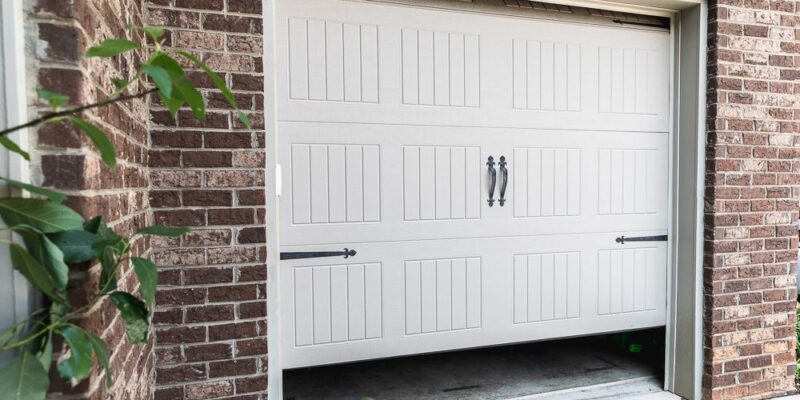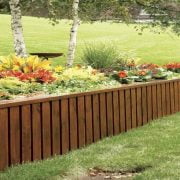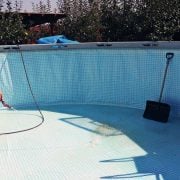I. Introduction
Garage doors are intricate systems of cables, pulleys, sensors, and moving parts that operate thousands of times throughout their lifespan. Over time, wear and tear can cause various problems to develop – from minor issues like noise to complete malfunctions that prevent the door from opening. Learning to troubleshoot and repair common garage door problems is an invaluable skill for any homeowner.
Doing the repairs yourself rather than calling a service technician for every little glitch can save you significant amounts of money in maintenance costs over the years. With some basic tools and mechanical know-how, many garage door fixes can be successfully tackled as do-it-yourself projects.
II. Troubleshooting Garage Door Issues
Several problems can arise that prevent your garage door from operating properly. If the door is struggling to open, won’t open all the way, or opens unevenly, there are a few key troubleshooting steps.
Start by inspecting the torsion springs, which provide the counterbalance tension needed to open and close the door. Broken or worn springs will need to be replaced, which is best left to the professionals due to the extreme tensions involved. Next, check the lifting cables that lift the door.
Frayed or broken cables should be replaced right away to ensure smooth operation. Lubricating all the rollers and hinges with garage door lubricant can also help prevent sticking and extra strain on the opener. Debris like dirt and leaves can get lodged in the track, obstructing the door’s path and causing issues – keep the track clean.
If your door is opening and closing but making grinding, squeaking or rattling noises, there are ways to quiet it down. Lubricate any roller bearings, pulleys and moving parts according to the manufacturer’s recommendations. Tighten any loose hardware that may be vibrating or knocking.
Inspect the rollers and lift cables – worn out components can create noise from excess friction. If the tracks are misaligned, it can cause the door to rub and grind during operation. Ensuring proper alignment of horizontal and vertical tracks is key.
Problems with your garage door opener’s remote control are also common. Start by replacing the battery if needed. Remotes occasionally lose sync with the motor and need reprogramming – most openers have a “learn” button allowing you to resync the remote. If neither of those fixes the issue, you may need to replace the remote altogether. Following this troubleshooting process will help diagnose most garage door problems.
III. 3 DIY Garage Door Repairs
A minor garage door opener repair can be completed yourself without the need to call a technician. Replacing broken sectional door panels is a straightforward DIY fix. Start by unclipping the damaged panel from the surrounding door sections. Purchase a replacement panel made of the same material as your door, and cut it to match the original size. Then clip the new panel into place in the door.
Worn or squeaky rollers are another easily replaceable part. Begin by detaching the roller from its bracket to remove it. Insert the new roller in its place on the bracket. Test that the door opens and closes smoothly before moving on. It’s ideal to replace all rollers at once so they wear evenly.
Loose hinges that move or rattle when the door operates also require attention. Fully close the garage door, then inspect the hinges on each side. Tighten any loose hinge screws using a screwdriver. Apply pressure when tightening to keep the hinge steady. Open and close the door to test for noise – repeat if any hinges are still loose. Properly tightened hinges will prevent further issues.
With a few tools and mechanical aptitude, many garage door repairs can become DIY projects. But when in doubt, don’t risk injury – leave highly tensioned components like torsion springs to the professionals.
IV. When to Call a Professional
There are some garage door repairs that require expertise to fix safely. These include malfunctioning torsion springs, bent or misaligned tracks, complex motor issues, and severely off-balance doors. When facing these problems, it’s wise to call a professional garage door repair service to have the necessary skills and tools to get your garage door working properly again.
V. Questions to Ask When Hiring a Garage Door Technician
When you need to call in a professional garage door repair service, make sure to ask the right questions upfront. Ask if the company is fully licensed, bonded and insured – this protects you in case of damages or injuries.
Inquire about their rates and service fees – some charge for estimates while others offer free quotes. Ask about availability for repairs – are they open weekends, evenings or offer 24/7 emergency service? Find out what specific brands of doors, motors, parts and components they use to ensure compatibility and quality.
A reputable contractor should provide warranties on all parts and labor – typically 1-3 years. Request references from recent customers and follow up. Also ask if they will dispose of any old materials and parts safely.
Finally, understand what methods of payment are accepted – do they require payment upfront, accept credit cards, etc. With the right garage door company, you can get your repair done properly and avoid future issues. When shopping around, consider hiring local garage door spring repair in San Francisco to service your unique needs.
VI. Conclusion
Many minor garage door repairs can be tackled as DIY projects with the right mechanical skills and tools. However, when malfunctioning springs, motors, tracks and other complex issues arise, it’s essential to call in a trained professional technician.
Be sure to ask any potential garage door company the key questions to ensure you hire qualified experts. With routine maintenance and prompt repairs when problems occur, you can keep your garage door operating smoothly for years to come. Knowing when to DIY and when to call the pros is crucial to cost-effective, long-term garage door maintenance.














Comments